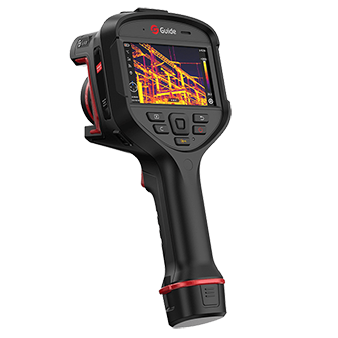
# Thermal Imaging Technology: Principles and Applications
## Introduction to Thermal Imaging
Thermal imaging, also known as infrared thermography, is a technology that allows us to see and measure thermal energy emitted from objects. Unlike visible light cameras, thermal imagers detect infrared radiation and convert it into visible images that represent temperature variations across a scene.
## How Thermal Imagers Work
Thermal imagers operate based on several key principles:
– All objects above absolute zero emit infrared radiation
– The amount of radiation increases with temperature
– Special sensors detect this radiation and convert it into electronic signals
– These signals are processed to create thermal images (thermograms)
The core component of a thermal imager is an infrared detector, typically made of materials like vanadium oxide or amorphous silicon that are sensitive to infrared wavelengths.
## Key Components of Thermal Imaging Systems
Modern thermal imaging systems consist of several essential components:
1. Infrared Lens
The lens focuses infrared radiation onto the detector array. Germanium is commonly used due to its excellent infrared transmission properties.
2. Detector Array
This is the heart of the system, consisting of thousands of individual detector elements that convert infrared radiation into electrical signals.
3. Signal Processing Electronics
These circuits amplify and digitize the signals from the detector array for further processing.
4. Image Processing Software
Advanced algorithms enhance image quality, apply color palettes, and enable temperature measurement capabilities.
5. Display
The processed thermal image is displayed on an LCD or OLED screen, often with various color schemes representing different temperature ranges.
## Applications of Thermal Imaging Technology
Thermal imagers have found widespread use across numerous industries and fields:
### Building Inspection
Thermal cameras help identify heat loss, moisture intrusion, and electrical faults in buildings. They can detect insulation deficiencies, air leaks, and plumbing issues behind walls.
### Industrial Maintenance
In manufacturing plants, thermal imaging is used for predictive maintenance of electrical systems, mechanical equipment, and process monitoring to prevent costly failures.
### Medical Diagnostics
Infrared thermography assists in detecting inflammation, circulatory problems, and certain types of cancer by revealing abnormal temperature patterns in the body.
### Security and Surveillance
Thermal cameras provide effective night vision capabilities, detecting intruders and suspicious activities regardless of lighting conditions.
### Firefighting
Firefighters use thermal imagers to see through smoke, locate victims, and identify hot spots in burning structures.
### Automotive
Advanced driver assistance systems (ADAS) incorporate thermal imaging for improved night vision and pedestrian detection.
## Advantages of Thermal Imaging
Thermal imaging technology offers several significant benefits:
– Non-contact measurement: Allows temperature measurement without physical contact
– Works in complete darkness: Doesn’t require visible light
– Sees through certain materials: Can detect heat patterns through smoke, fog, and some thin materials
– Real-time imaging: Provides immediate thermal information
– Quantitative analysis: Many systems provide precise temperature measurements
## Limitations and Considerations
While powerful, thermal imaging has some limitations to consider:
– Cannot see through glass (most glass reflects infrared radiation)
– Resolution is typically lower than visible light cameras
– Accuracy can be affected by environmental conditions
– Requires proper training for interpretation of thermal patterns
– High-performance systems can be expensive
## Future Developments in Thermal Imaging
Keyword: thermal imager
The field of thermal imaging continues to evolve with several promising developments:
– Smaller, more affordable sensors enabling wider adoption
– Higher resolution detectors improving image quality
– Integration with AI for automated analysis and pattern recognition
– Combination with other imaging modalities (visible light, depth sensing)
– Improved sensitivity for detecting smaller temperature differences
As thermal imaging technology becomes more accessible and sophisticated